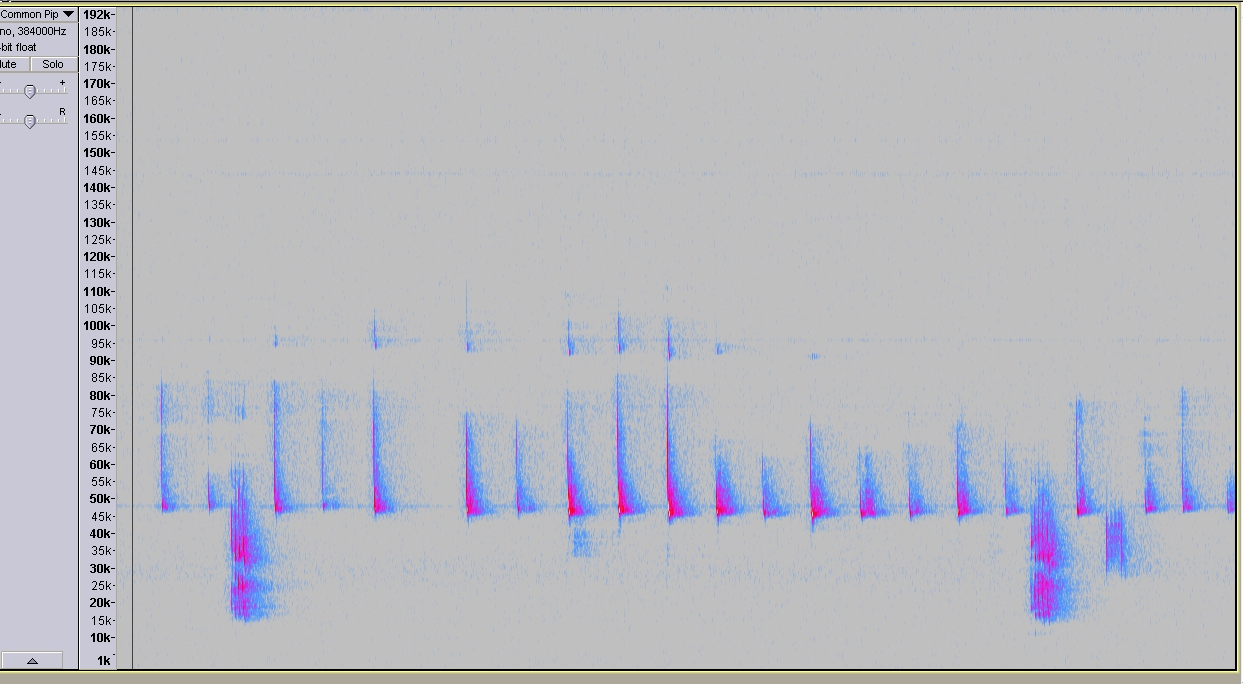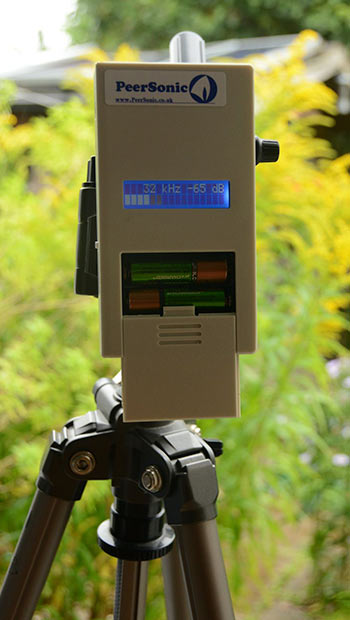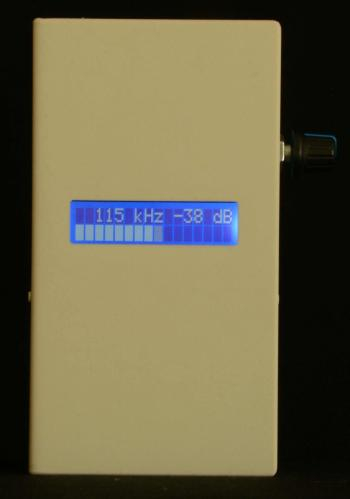Are you new to bat sound?
The whole world is new to bat sound, it was not until the middle of the last century that it was possible to hear them at all!
Bats use ultrasound at various frequencies to navigate, catch food, and of course to communicate. Below is a sample of a Common Pipistrelle with Social Calls which has been time expanded to make it audible:
Common Pipistrelle with Social Call
...and here is a sample of a Greater Horseshoe bat, again time expanded to make it audible:
Greater Horseshoe
Bats are not generally blind, can often see much as well as we can, but it tends to be dark, so ultrasound is a good solution for night time navigation.
Hearing Bat sounds
Bat sound can be immediately translated to somthing humans can hear by various methods. Popular methods are:
Heterodyne – uses a radio technique to mix signals, you hear a good representation of the energy of bats, but it is not a true sound by any means. It also needs tuning, otherwise you will miss calls. For reference, below is the Heterodyne recording of a Common Pipistrelle.
Common Pipistrelle Heterodyne Sound
Frequency Division – A simple method that always catches the sound and divides by 10-20, it sounds fairly good, but it loses much of the sound detail.
Time Expansion – literally slows the sound down, a bit like having a BAT-TARDIS, but you can only slow down a slither of the sound, otherwise you will be standing there, listening still, well after the bat has gone home.
So, why not record the whole bat sound and play it back later? - A great idea but this cannot be achieved with a normal voice recorder; you need to be able to capture very high frequencies and this is where purpose built bat recorders come in. Bat recorders use specialist microphones that are sensitive to these very high frequencies and so can record them in real-time for analysis later on.
Having recorded the sounds, what next?
There are various ways to analyse your recordings:
Spectrograms
 Common Pipistrelle with Social Calls Spectrogram Display
Common Pipistrelle with Social Calls Spectrogram Display
Compare this with the sound of this analysis - you can track the image to the sound really well.
Common Pipistrelle with Social Call
Professionals like to look at spectrograms which show the 'spectral content' of the sound, and in conjunction with some useful documents (such as Jon Russ's Britsh Bat Calls) it is possible to identify many of the UK species.
Automatic recognition tools
Slowed down recordings also known as time expansion
You can slow down the sound, and then sitting at your desk you can listen to the bat sound at 1/20th of its normal speed. This also helps with recognition.
In any case, bat sound is fascinating. It is even possible to listen to them catching insects (often mosquitoes) which you can hear in our sample below, listen for the sound as it speeds up at 1:07 and the feeding buzz at around 1:10! Its quite amazing! Can you hear the second feeding buzz later on?
Pipistrelle Echo, Social Call and Feeding Buzz
Getting Started in Bat Recording
If you would like to start listening to bats there is much equipment available.
Low cost heterodyne and frequency division is available from many wildlife equipment suppliers. Do not forget that these do not usually display the true peak frequency of the bat, and do not record the full ultrasonic sound. But they all offer the chance to "detect" bats, even if they do not "record" bats.
The Peersonic RPA3 goes much further!
The Peersonic bat recorder has both Heterodyne and Frequency division, true display of peak energy frequency , and fully records the ultrasonic sound for later investigation.
You can leave the RPA3 out for the evening or an entire night if you are getting a bit tired of this bat lunacy, or want to go in for dinner - it will automatically record the bats for you, unattended. The next day you can download the recordings to your computer, listen and will identify the times the bats are visiting. It's that easy!
Here are some more time expanded (slowed down) recordings of some of our UK bats with their spectrogram images.
Pipistrelles
The Common Pipistrelle and soprano Pipistrelle are our most common in the UK, and they are quite easy to recognise.
Greater Horseshoe
The Greater Horseshoe is less common but found very much in the South West of the UK, It is a very high frequency bat, and very easy indeed to recognise. You can tell from the RPA3 display if you have a Horseshoe bat easily.
Audio Recordings
Daubentons Navigation Call
Whiskered Bat Navigation Call
Greater Horseshoe with Myotis Calls
 The RPA3 Recorder The RPA3 Recorder |
What to know more?
If this has raised your interest and you have questions please call or mail via the contact form. I always have time for beginners – Peter Peersonic.
Fianlly, please listen to my home mixed recordings of "all" (not quite all) UK bats singing together.
Home Mixed Recording of many UK bats!

